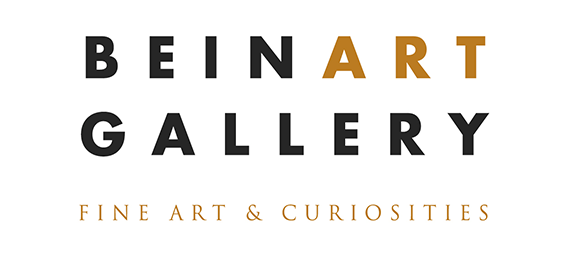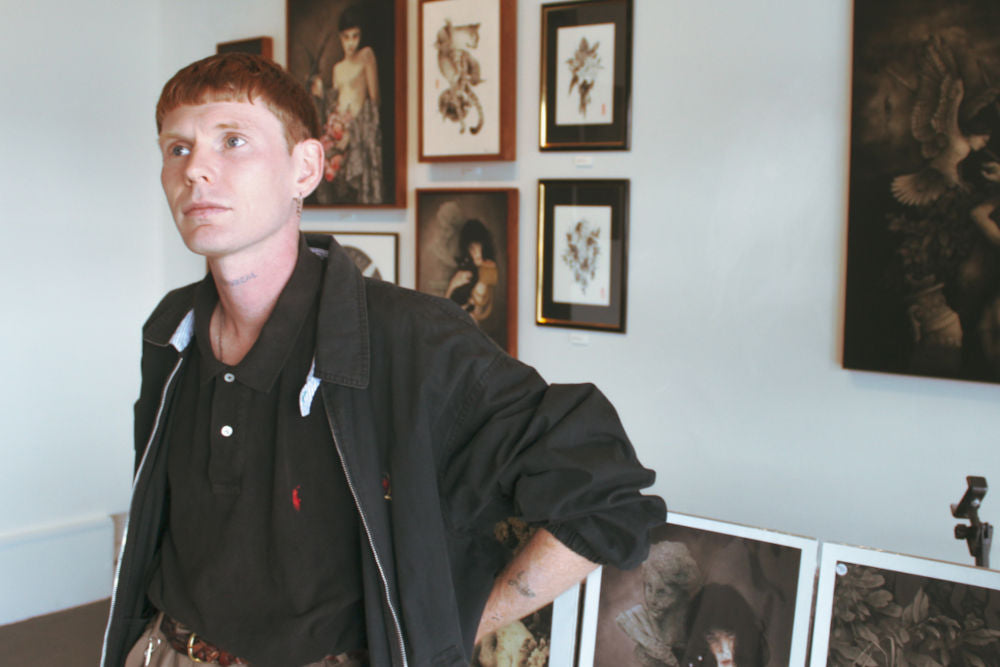
It’s hard to resist being lured in by Robert Duxbury’s soft, timeless paintings. The works are drenched in vulnerability and emotionally potent. Duxbury uses his art as a sort of reflective biography, working through memories of bittersweet youth and externalising tender moments of fear and suffering from a place of kind and gentle contemplation.
Originally a street artist, Duxbury was drawn to traditional Chinese painting techniques while living in Shenzhen. After much self teaching and investigation, Duxbury used these techniques as the foundation on which to build an art practice which became both a form of therapy and catalyst for personal and creative growth.
Ahead of his debut solo gallery show ‘Misanthropic Paradise’ at Beinart Gallery, Duxbury shared some insight into his creative journey so far.
I stopped pursuing the end result that would represent something I wanted to express and focused more on the process itself as a way to explore emotions I didn't fully understand, often conceptualising from my subconscious and learning the meaning along the way.—Robert Duxbury
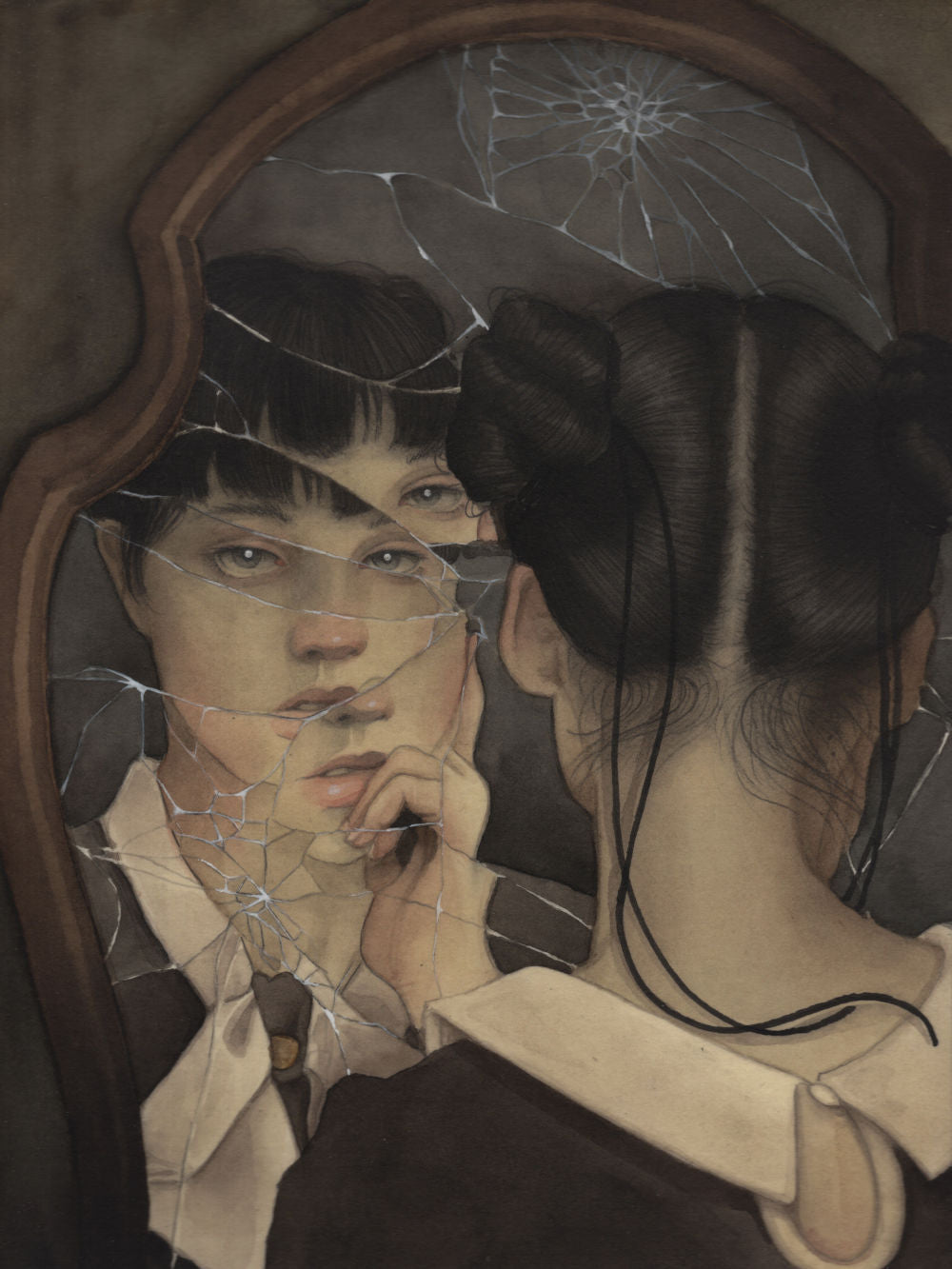
Fragmented Reflection - Watercolour on watercolour paper mounted on panel by Robert Duxbury.
Indigo Rawson-Smith: I’d like to start by asking about your creative beginnings. You were involved in the street art scene for a long time, how did you get into that? What drew you to it and is it still an area that you’re involved in?
Robert Duxbury: I was introduced to street art when I was about 15 years old, I was drawn to the rebellious nature of this form of expression. I also liked the idea of it as a kind of secret sub culture that you could be part of unbeknownst to others. I valued the sense of community, a lot of the younger graffiti writers and street artists were what you could call "troubled youth" and I identified with this.
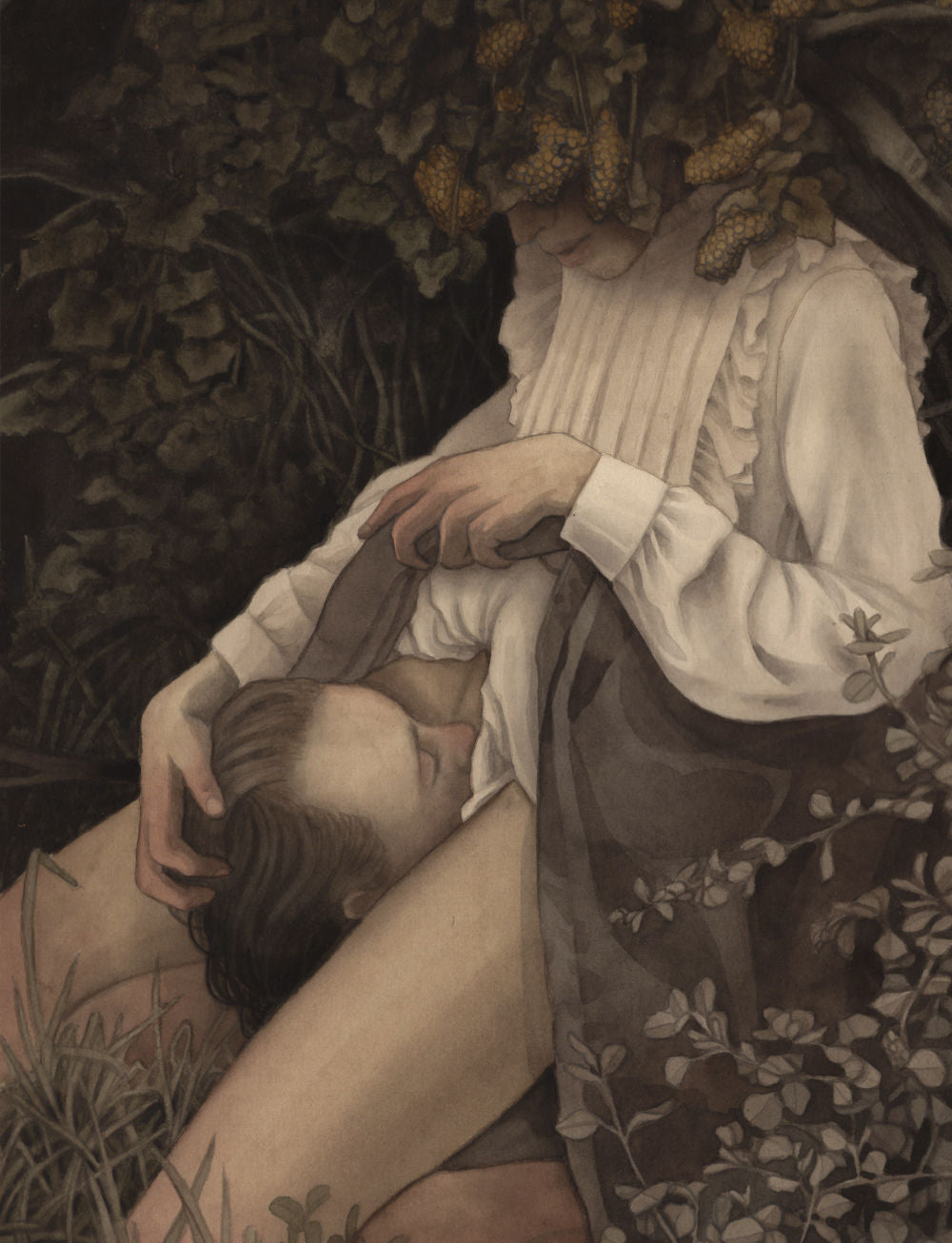
A Lovers Kiss Beneath The Bushes - Watercolour on watercolour paper mounted on panel by Robert Duxbury.
IRS: You spent a number of years living and working in China, what was it that brought you there and can you tell me a bit about your experience working as an artist there?
RD: I moved to China on a whim, seeking a change in environment. I first landed in Hong Kong and spent a few months living in Mong Kok before moving to Shenzhen in mainland China due to more street art and mural opportunities. The biggest impact China had on me was the sheer isolation, not only did I live in a village on the outskirts of the city where most of the residents had never seen a foreigner before but I also didn't have a VPN(so had no access to unrestricted internet). I don't think people fully understand how restricted the internet is in China; I had no Google, no Google store apps, no Facebook, no Pinterest, temperamental email and virtually no contact with the outside world. This created an environment where I was free from the influences of constant media and information consumption. This gave me the unique opportunity to explore what I really wanted from my practice without the pressures of comparison and need for validation that is so prevalent in modern society.

Cicada On My Face - Watercolour on watercolour paper mounted on panel by Robert Duxbury.
IRS: It was while in China that you ended up studying the traditional Chinese Gongbi and ink wash painting styles. What drew you to those styles? And what was your training/ learning process like?
RD: Traditional art plays an important role in Chinese culture and I was exposed to it on a daily basis. I was drawn to the balance and composition of Gongbi Paintings. The balance of loose/precise brush strokes and the use of negative space in compositions gives these figurative works a really poetic style. Often depicting flora and fauna I found this way of painting an embodiment of mindfulness. I spent about a year observing and analysing this art form, collecting books,visiting museums and art villages before picking up a brush. My "training" wasn't exactly formal, I met some really amazing gongbi painters who gave me valuable advice and I spent a lot of time pestering the local art supply shop owner. But learnt mostly from observation and trial and error. This is definitely my preferred way of learning as I value failures as much as success and think this is an important process for developing your own style.

Ubi Amore Ibi Dolor - Watercolour on watercolour paper mounted on panel for Robert Duxbury.
IRS: On your return to Australia in 2019 you made the swap from walls to paper in transitioning to a studio based practice, can you share some of your experiences within this transition and give us some insight into the challenges you faced?
RD: Changing to a studio based practice felt more like a total rebirth than a transition and that's because it wasn't just my practice that changed but my entire way of living.
It started while I was in China but took an intense and abrupt turn towards the end of my final year living there. I first started painting in a studio as I practiced Chinese watercolour. It always felt like an uphill struggle to create something of meaning painting street art especially since I was mainly doing client based commissions. I think it was a combination of this new medium and the lack of expectations from outside influences that allowed something to awaken in me. It was like I had always had this untapped reservoir of expression and inspiration and all of a sudden the floodgates opened. Unfortunately at this point in time the isolation of living in China and other unhealthy habits had negatively impacted my mental health and I was in no position to harness this new potential. But with reckless abandon I dove head first into extremely ambitious projects and my obsessive and perfectionist tendencies overwhelmed me. I would spend weeks in my studio in a constant manic state consumed by these projects. I viewed everything else in my life as frustrating inconveniences that kept me from my work. This included eating, sleeping and spending time with my then partner. Things would get so intense that I couldn't mentally disengage with my work and relied more and more on my already problematic substance abuse as a way to find temporary relief from my raging mind. Things got increasingly worse, I grew temperamental and cynical, my relationships broke down, I burnt bridges with clients and started to resent who I had become. I eventually reached a tipping point and I could no longer bear the suffering that was my reality so I spent every waking moment intoxicated. I can't remember much of my final months in China. I woke up one day in Australia with no recollection of leaving or even taking a flight.
This was not the first time in my life I had spiralled out of control as I had suffered from addiction for almost 15 years, but unlike other times I felt a sense of defeat and knew I didn't have it in me to continue my life this way. I spent 3 months in a Buddhist / CBT orientated rehabilitation clinic in Thailand. Through a lot of counselling, intense study, exercises, meditation and Buddhist teachings I unpacked a lot of trauma and began to unlearn the things that had only served to keep me in a state of constant suffering.
Upon returning to Melbourne I began to practice my new relationship with life but I still needed to create a new relationship with art, from an unhealthy obsession to a more sustainable approach, I wanted to express myself through my art but at the same time I needed to be less emotionally attached to it. I knew I wanted to pursue a studio based practice as all the inspiration I had unlocked in China indicated this is what I was meant to be doing. At first I limited myself to small illustrations that I could only spend an hour or so on, the more of these I created the more I realised my creative pool was not finite. This alleviated a lot of pressure for things to be perfect as I began to treat each one as a lesson rather than a potential masterpiece. My mind was clear and I was more aware of my emotions which allowed me to process them through my paintings. Surprisingly this also helped me practice non attachment towards my paintings as I stopped pursuing the end result that would represent something I wanted to express and focused more on the process itself as a way to explore emotions I didn't fully understand, often conceptualising from my subconscious and learning the meaning along the way. And once the painting is finished it feels as if it has served its purpose allowing me to let it go and move on. I slowly became more ambitious with my paintings, learning my limits regarding fatigue management and self care and with this new approach I feel I have begun to harness my full potential as a studio based artist.

Engines of Failure - Watercolour on watercolour paper mounted on panel by Robert Duxbury.
IRS: Despite the fact that you’ve only been creating works of this nature for a couple of years, your style has undergone quite a lot of change and development. Looking at your early work from a couple of years ago, the influence of the styles you studied in China is very overt. More recently you’ve begun to work with more colour and your themes and moods seem to be evocative of the Pre-Raphaelites and European romanticism. Were there key factors or inspirations that influenced you throughout this development or was it just an organic process as you discovered your style? And in what ways do you think that your training and time spent in China still have a lasting influence on this newer body of work?
RD: I suppose you could call it an organic process as far as direction goes, I look to the classics for inspiration as there is obviously something timeless about them. This influence has changed the way I use watercolour, almost trying to mimic oil paint resulting in a unique outcome as the mediums are vastly different. It's hard for me to view my paintings objectively but there might always be undertones of traditional gongbi in my paintings especially regarding composition and use of negative space.
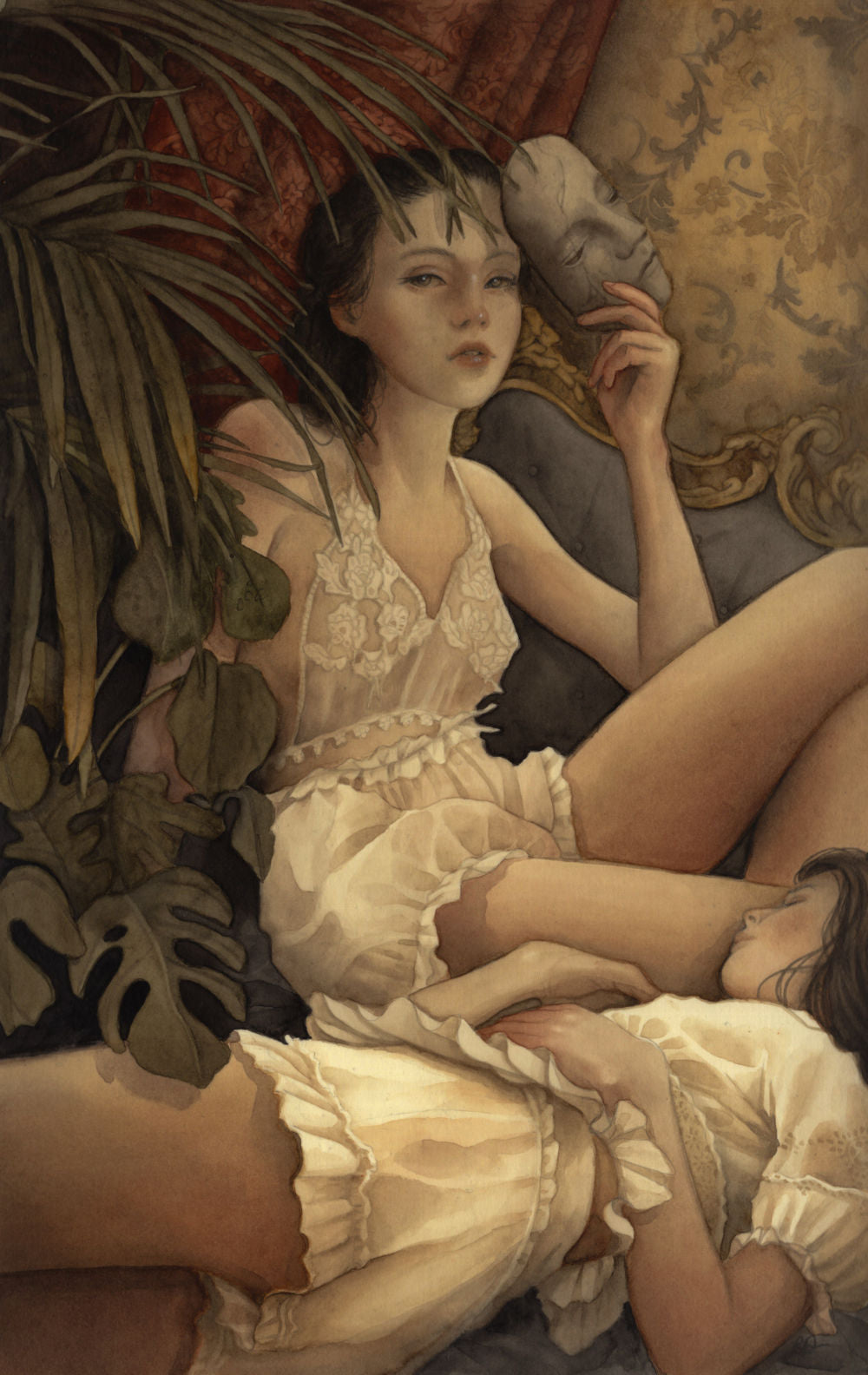
Boudoir - Watercolour on watercolour paper mounted on panel by Robert Duxbury.
IRS: Looking at your more recent work I notice that the subjects are almost invariably beautiful youths, often languishing and morose, their faces sometimes masked or obscured, they’re entrancing. Do these characters have a story or a source? How did they come to be?
RD: My works are quite introverted so a lot of the images and themes are representations of myself in some way or another. Often drawing on memories from my past. I find there is a certain emotional potency to youthfulness, this intense metamorphosis we go through as we all of a sudden become really self aware and our relationship to the world around us begins to change. I struggled with this a lot when I was young and often found emotions overwhelming, later in my life I would learn unhealthy ways to suppress these emotions. I like to use the juxtaposition of vulnerability and apathy to convey this in my paintings.
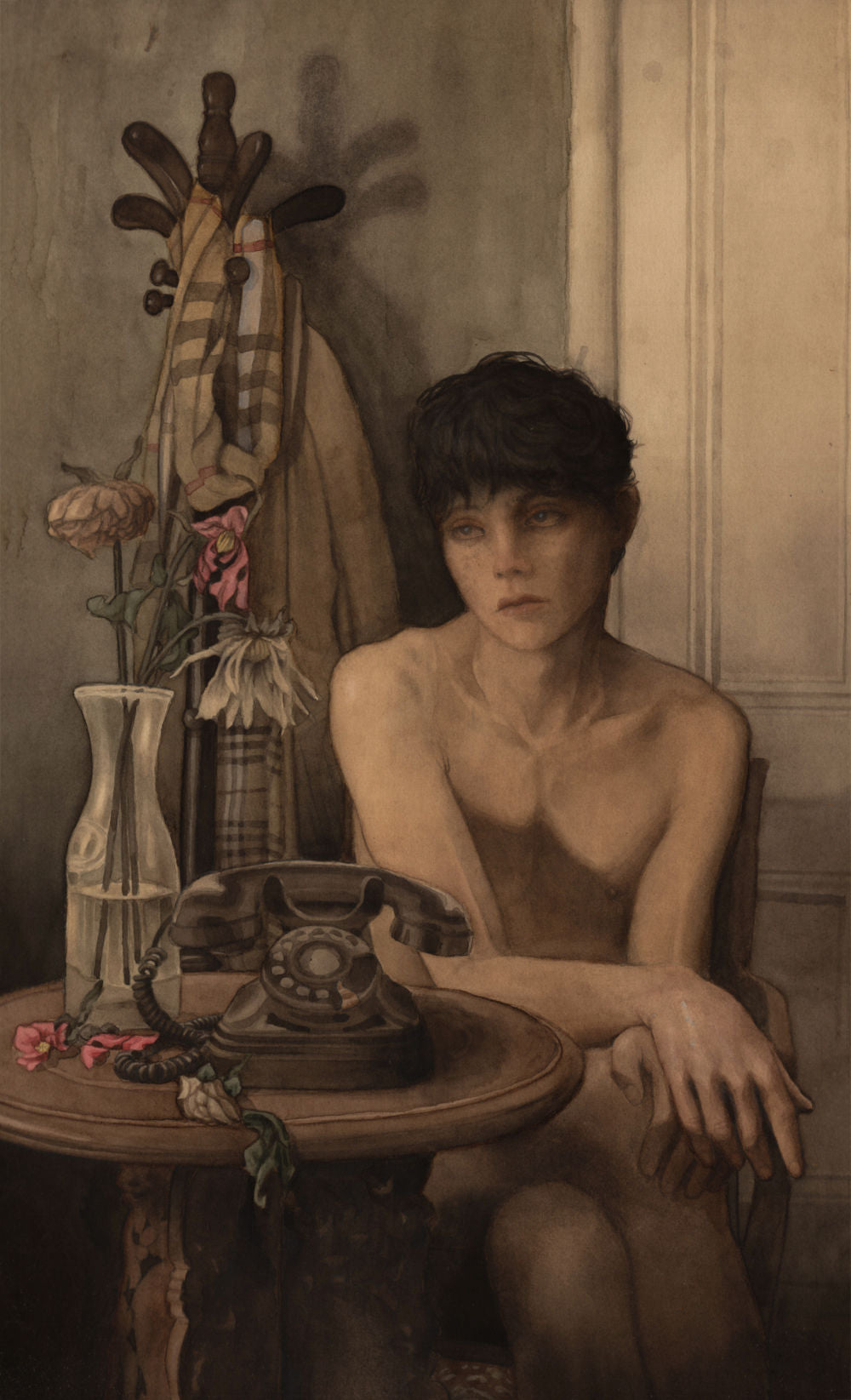
Wilted Flowers - Watercolour on watercolour paper mounted on panel by Robert Duxbury.
IRS: Your upcoming show “Misanthropic Paradise” is your first solo show since transitioning from street art to a studio practice, how does that feel for you?
RD: To be honest it doesn't feel real at the moment. I have been so focused on painting I haven't given much thought to how I feel about it. But I am really looking forward to standing in that space and seeing this body of work hung, I know in that moment I am going to feel a lot of things.
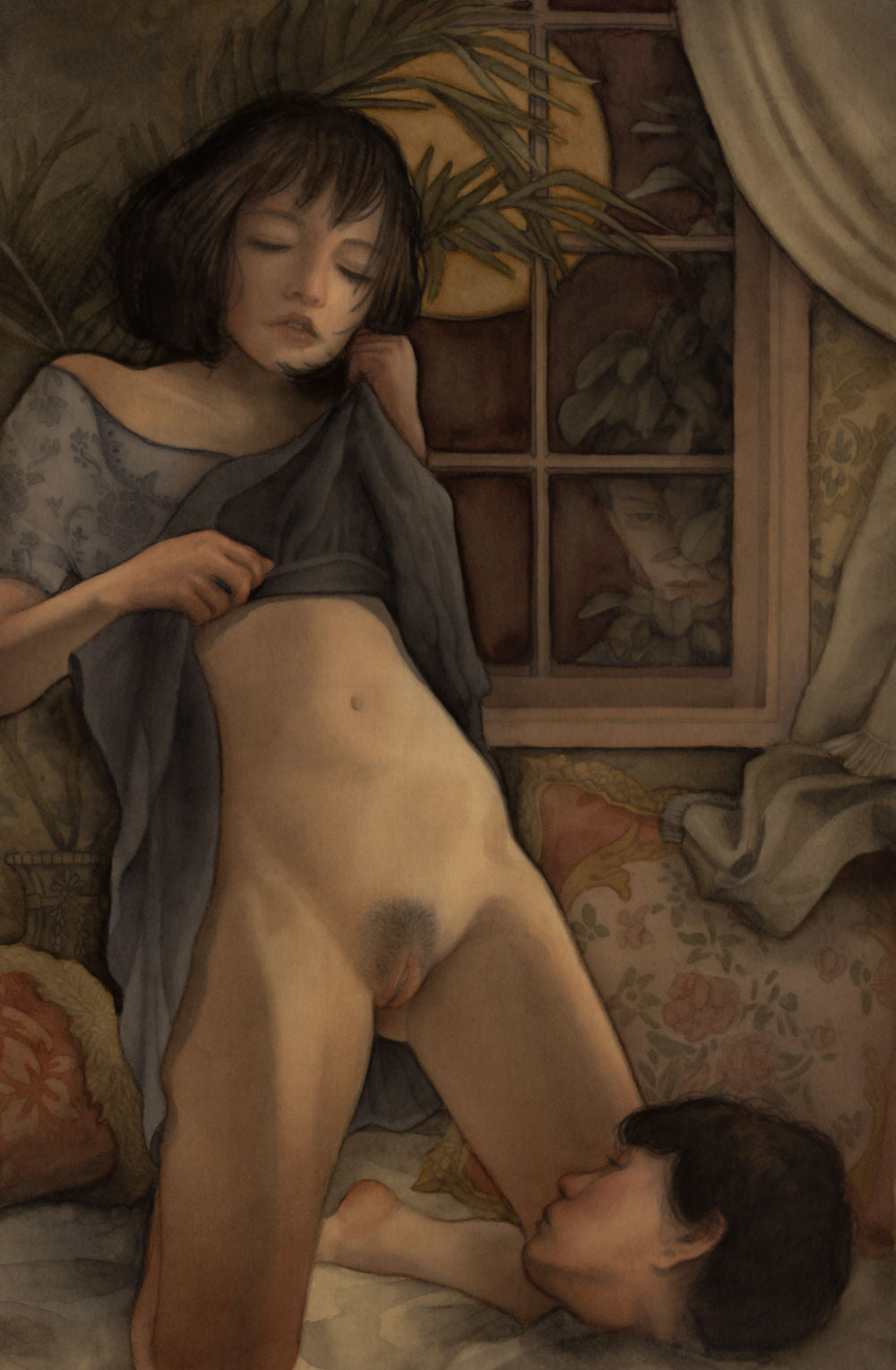
The Voyeur - Watercolour on watercolour paper mounted on panel by Robert Duxbury.
IRS: What does Misanthropic Paradise mean to you? What can visitors expect to see?
RD: Misanthropic Paradise explores the elusiveness of the deep and complex emotions that reside within our subconscious. This body of work puts form to these enigmatic emotions with the use of ambiguous symbolism and brooding colour palettes reflecting the subtleties in feelings and emotions or lack thereof.

Pomegranate - Watercolour on watercolour paper mounted on panel by Robert Duxbury.
IRS: As mentioned earlier you’re still quite early in your studio practice. Following on from this show and having your first solo gallery show under your belt, what do you see next for yourself and your art?
RD: I had a lot of crazy ideas come up during the creation of this body of work that would not have fit in thematically so I'm looking forward to experimenting with this and possibly even exploring some new mediums.
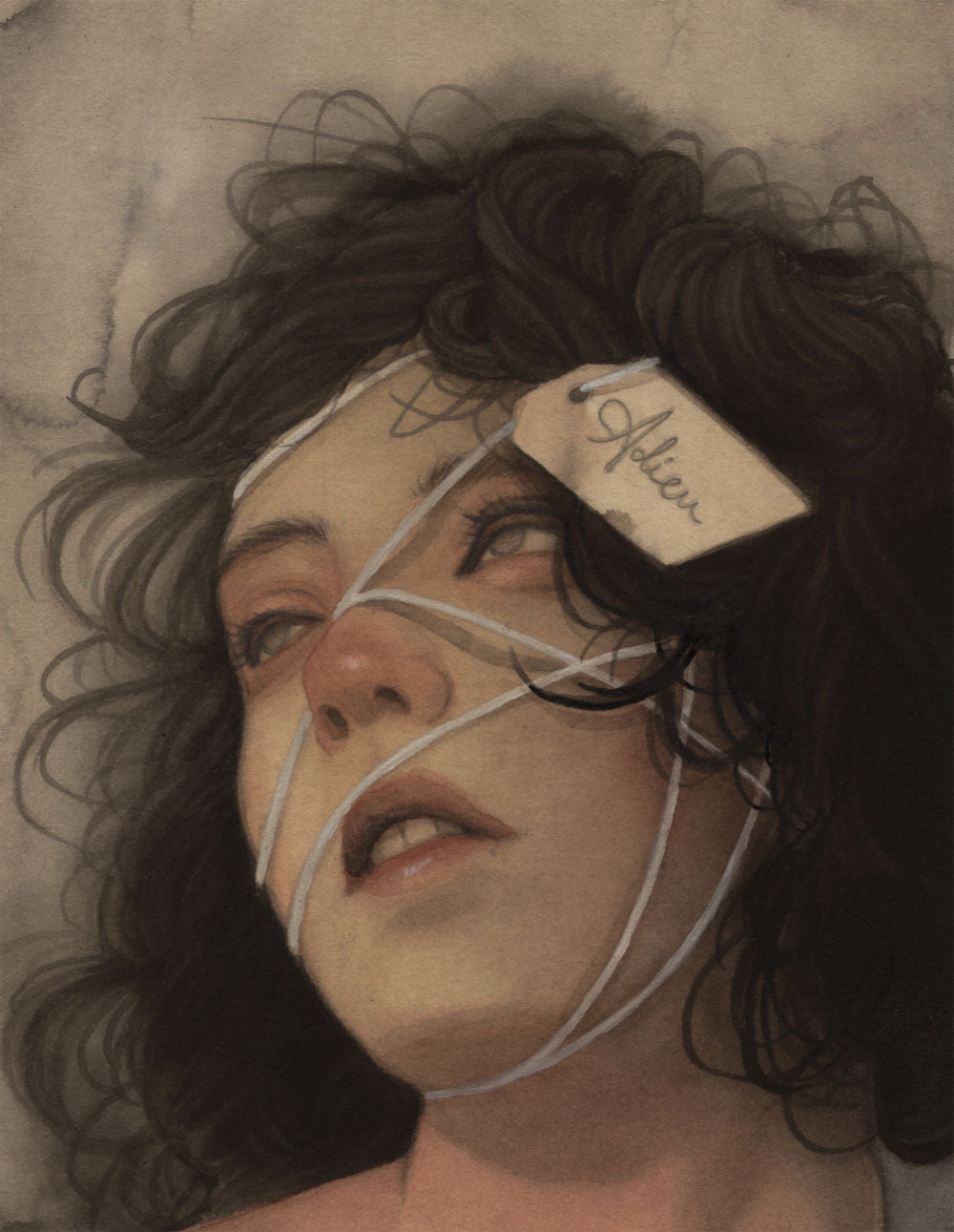
Adieu - Watercolour on watercolour paper mounted on panel by Robert Duxbury.
This interview was written by Indigo Rawson-Smith for Beinart Gallery in July 2021.
Indigo Rawson-Smith wears many hats, most notably as a Gallery Assistant at Beinart Gallery, Jeweller for her brand Indigo Nox Jewellery, and as a devoted snack enthusiast.
Having spent a few years working in galleries and art spaces around London she relocated to Melbourne to undertake full-time study in jewellery design, becoming a member of the Beinart Gallery crew in early 2021.
In a year when we’ve all felt the touch of isolation and find ourselves forgetting how to speak to people outside of our COVID safe “bubbles” Indigo has been attempting to polish up her rusty social skills while interviewing a number of Beinart Gallery’s exhibiting artists.




 Cart
Cart


